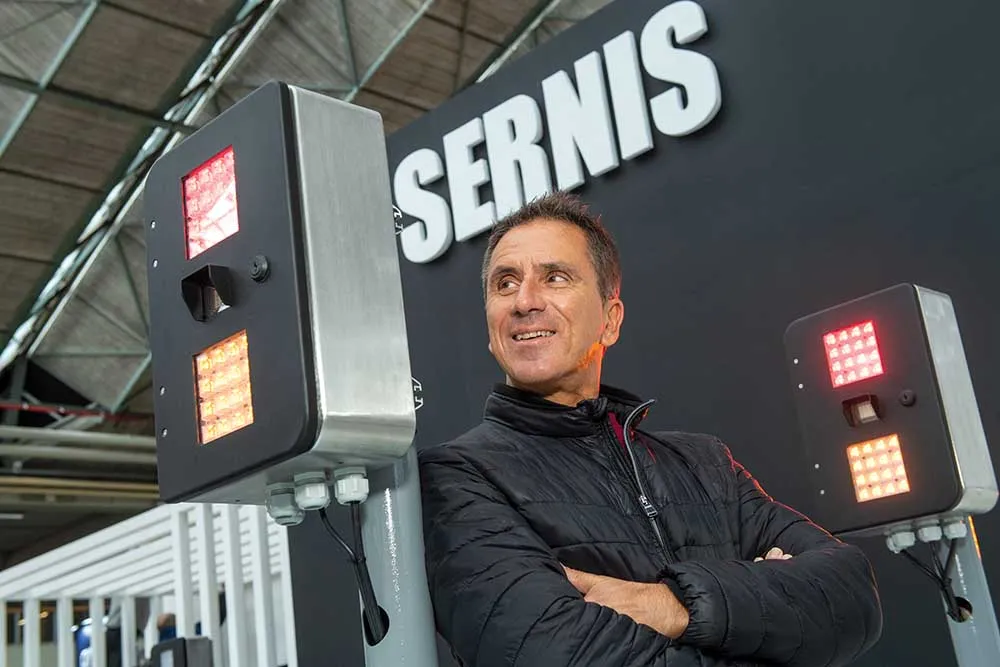
Portuguese manufacturer
The stud also has RF low power 868MHz mesh network communication and has microcontroller technology inside each stud. Features include a wake up and sleep function, automatic brightness control and night-level contraction.
The stainless steel, aluminium and polycarbonate body house two uni-directional LEDs and four bi-directional LEDS.
To complement the SR-40, Sernis has produced another snow-plough resistant stud, the inductive power SR-45 IPW. Installation is easier through the plug-and-light concept. A non-wired connection prevents unnecessary drill and deterioration of the road in future interventions. And all road studs are connected to the Control Central Unit to allow several control features.
The 3kg SR-45 IPW uses 230 volts AC and its 8 LEDs consume 5 Watts of power. Sernis says it is suitable for use in roads, tunnels, parks and airports.









